You might also want to
P603 Product Used Image Gallery
Neoclassical Villa Exterior with Polyurethane Cladding and Elegant Facade Design
Neoclassical Elegance with Polyurethane Facade ElementsThis villa exterior demonstrates the refined appeal of polyurethane cladding in harmony with neoclassical architectural traditions. The balanced symmetry of the facade, along with ornate molding details, creates an elevated sense of style and sophistication. Slender vertical lines and carefully placed recessed panels create a rhythm that highlights the villa's grandeur.The tall windows with wrought iron railings open the interior to natural light while expressing a strong vertical emphasis. The central entrance is framed with pilasters and completed with an arched transom window, introducing a focal point that reflects centuries-old traditions of European villa design. Polyurethane elements lend the opportunity to craft precise shapes and delicate motifs that withstand time and weather.Classical Motifs and Decorative DepthSubtle decorative ornaments, such as floral railing designs and fluted pilasters, connect the modern build with historical influences from ancient Roman and Renaissance villa facades. The roof is accented with dormer-type openings and a balustrade crowning, adding detail to the skyline silhouette of the structure. Lighting fixtures integrated into the facade emphasize the architectural textures during the evening, transforming the villa into a visually striking landmark.Throughout history, architectural orders like Doric, Ionic, and Corinthian have inspired such proportions and motifs. In this modern adaptation, polyurethane achieves the ornamental depth of those classical traditions while providing practical efficiency in installation and weather resistance. The villa seamlessly bridges heritage and modern lifestyle.Durable polyurethane exterior decorationRefined neoclassical proportionsBalanced symmetry and elegant window structuresWrought iron balconies with decorative motifsGrand entrance with arched transom window This neoclassical villa exterior uses polyurethane cladding for refined detailing. The grand facade highlights symmetry through tall arched and rectangular windows. Elegant wrought iron balconies add charm and sophistication. The entryway features pilasters and a prominent arched window. Vertical fluting and recessed panels create depth. Ornamental motifs enhance its timeless elegance. Roof dormers and balustrades accentuate the skyline. Evening lighting highlights architectural reliefs effectively. Landscaping integrates ornamental greenery with balance. Outdoor pathways lead to a welcoming entry statement. Classical traditions inspire modern adaptations throughout the design. Polyurethane elements ensure both durability and fine detail. Historical influences meet practical building technology seamlessly. This exterior style blends tradition with comfort. The result is a villa facade radiating dignity, harmony, and refinement.
Hotel Exterior Decoration Tips and Suggestions Combining Elegance and Aesthetics
Hotel exterior decoration is an important element that determines the appearance of the hotel. In this article, tips and suggestions will be presented on how the hotel exterior decoration should be. Exterior designs made taking into account elegance, aesthetics and functionality reflect the character of the hotels and create the first impression of the guests. The keywords are hotel exterior decoration. Issues such as elegance and aesthetics will be discussed in detail in the article. The article will focus on the factors you need to consider in hotel exterior decoration, material selection, color preferences, architectural details, lighting and plant arrangements. Choosing an exterior design that suits the style and location of the hotel will strengthen the brand image of the hotel and increase the satisfaction of the guests. In the article, different hotel exterior decoration examples and inspiring design ideas will be shared. Hotel exterior decoration is important to increase the competitiveness of the hotel, create an attractive appearance and provide an unforgettable experience. In our article, you can learn about tips and trends on hotel exterior decoration and decorate your hotel's exterior impressively. Hotel exterior decoration, which combines elegance and aesthetics, ensures that guests have an unforgettable experience. In our article, you can learn the points you need to consider in hotel exterior decoration and discover ways to make the exterior of your hotel attractive.
Modern Classic Villa Decoration Ideas with Polyurethane Details
Modern Classic Villa Exterior DesignThis villa highlights the harmonious combination of polyurethane decorative details with sleek modern geometry. The façade blends smooth white wall surfaces with vertically aligned dark textured stone panels, creating visual contrast and a sophisticated rhythm. Tall windows framed by detailed columns establish a timeless sense of order and symmetry.At the corners, the use of classical column capitals with ornate motifs enhances the villa’s modern classic spirit. The geometric trim running along the walls emphasizes linearity, while the symmetry of the design reflects architectural balance.Outdoor Living and Decorative HarmonyThe spacious wooden terrace extends into the landscape, furnished with minimalist chairs and a table, ideal for relaxation and leisure. The swimming pool mirrors the rectilinear proportions of the building, reinforcing the clean aesthetic. The soft color palette of stone gray and white works in harmony with the natural environment, making the villa a dignified yet inviting presence.Polyurethane profiles offer both durability and decorative quality, reflecting classical traditions while adapting to contemporary needs. Historically, column designs have been adopted from Doric and Corinthian orders, and here they are reinterpreted with modern material precision. The patterns and motifs formed on the corners demonstrate intricate detail while preserving structural clarity.Motifs, Geometry, and IdentityEvery architectural element communicates a balance between tradition and innovation. The vertical stone panels create depth, while the rectangular glass sections emphasize continuity. Small cornice motifs around the windows add elegance without overwhelming the form. This integration of decorative motifs with geometric framing defines the villa’s architectural identity, offering a sophisticated aesthetic for modern luxurious living. This villa showcases a seamless mix of polyurethane ornaments with clean geometry. The façade combines light wall textures and dark stone in refined contrast. Vertical alignment creates a rhythm that enriches the outlook. Ornate column capitals emphasize its modern classic character. Tall glass sections connect the indoors with nature. Intricate edge motifs enhance decorative quality. The wooden terrace extends the living area outdoors. A linear swimming pool mirrors architectural proportions. Balanced geometry underlines harmony. Elegant white and gray shades unify form with setting. Classical design influences are subtly reinterpreted. Symmetrical spaces generate timeless ambiance. High-quality decorative motifs add intricate depth. Geometric patterns establish consistency. The result is a refined yet contemporary villa design.
Polyurethane Bracket Designs for Classic Exterior Decoration
Polyurethane Bracket Models and Classical DesignPolyurethane brackets are highly regarded for their ability to replicate the grandeur of stone or wood carvings while remaining practical and lightweight. These models feature a wide array of ornamental motifs, including acanthus leaves, volutes, and scroll-inspired lines. Their detailed relief work adds depth and texture to facades and interiors, creating a sculptural effect.In classical architecture, brackets and corbels were used to support and embellish projecting structures. The influence of neoclassical design can be seen in the intricate leaf scrolls, symmetrical spirals, and delicate floral bands displayed in these examples. Each piece carries clear references to baroque and renaissance decorative traditions, but with the practicality of polyurethane.Painting and Finishing GuidanceBecause these polyurethane elements come in a neutral white finish, they can be adapted through painting or gilding. A matte wash emphasizes subtle carvings, while a metallic finish further enhances their depth. Homeowners and designers often integrate them into both exterior elevations and interior wall treatments.Applications and Decorative ImpactThe adaptability of these bracket designs makes them suitable for framing doorways, highlighting pilasters, or decorating cornices. They work equally well in luxury residential spaces and public buildings where a classic impression is desired. Their precision detailing ensures that even modern minimalist settings can benefit from a touch of classical richness.Historically, such decorative supports were seen in Greco-Roman, Gothic, and Baroque contexts. By translating these motifs into polyurethane, designers today achieve a balance of authenticity, beauty, and modern practicality.Lightweight construction for easy installationRich carved details with classical influenceDurable and weather resistantCustomizable finishes to match design schemes Polyurethane brackets offer an elegant solution for classic exterior and interior decoration. These elements replicate intricate carvings with lightweight durability. The presence of scrolls, acanthus leaves, and floral motifs lends authentic historical beauty. Designers value their adaptability to both modern and traditional projects. Their smooth surface makes painting and gilding straightforward. Polyurethane is praised for being resilient while easy to handle. Buildings gain depth through strong ornamental profiles. The brackets create harmony in neoclassical wall compositions. Rich details appear sculptural yet remain practical. Historically linked to architectural support, they now serve mainly decorative purposes. Volutes and botanical embellishments evoke ancient symbolism. Their versatility extends from facades to interiors. Lightness allows safe and quick mounting. With customizable finishes, these elements fit varied aesthetics. They unite functionality with strong decorative design.
Neo-Classical Modern Villa Exterior with Polyurethane Decorative Elements
Neo-Classical Villa Exterior with Polyurethane DetailsThe exterior design of this villa demonstrates the harmony between neo-classical features and modern living standards. Prominent pilasters, decorative cornices, and polyurethane ornaments define the façade’s elegance. Large arched windows framed with finely crafted moldings emphasize verticality, while wrought iron balcony railings add artistic integrity.The columns beside the entrance recall ancient classical architecture, evoking the dignity of Roman and Greek construction traditions. Historically, such columns symbolized durability and proportion, and here they are reinterpreted to suit a contemporary villa.Decorative panels and geometric frames establish a strong visual rhythm across the façade. The soft gray walls paired with a contrasting dark roof create a serene yet powerful composition. Polyurethane elements allow intricate motifs such as relief borders and cornice detailing to appear with sharp precision while maintaining durability.Additional features include symmetrical lighting sconces flanking the doors, accentuating nighttime appeal. The rooftop terrace expands functional space without disrupting the villa’s aesthetic order. These details unite to form an exterior that is both grand and inviting, showcasing a balanced blend of modern villa design and a classic style approach.Geometric frames highlight structural balance.Arched windows emphasize elegance.Polyurethane elements ensure durability and detail accuracy.Columns and cornices enrich the façade with depth and shadow. This neo-classical villa exterior merges grandeur with modern precision. Decorative polyurethane details highlight the façade. Tall arched windows create a sense of openness and light. Wrought iron balcony railings emphasize elegance. Vertical pilasters balance with crisp horizontal cornices. The soft gray walls contrast with the dark roof shingles effectively. Lighting features add architectural character during the evening. The entrance is framed by columns reflecting classical traditions. Detailed geometric frames enrich the overall rhythm of design. Polyurethane elements ensure refined durability. The rooftop terrace provides functionality in style. Arched compositions recall classical architectural heritage. The harmonious façade reflects timeless sophistication. This villa combines classical architecture with modern villa design. Distinctive polyurethane details complete the aesthetic impression.
Tokat Gurme wedding hall exterior decoration
In the Tokat Gürme Wedding Hall project we modeled the halls architectural design in 3D prepared high-quality renderings and produced all polyurethane decorative products used in the project in our own facilities We managed the design and production process end-to-end offering aesthetic durable and custom-sized solutions
Elegant Classical Decoration with Polyurethane Corbels
Polyurethane Corbels in Classical DesignPolyurethane corbels offer a lightweight yet durable alternative to stone and wood, making them a versatile choice in classic architectural decoration. With their smooth white surfaces, they enhance interiors and exteriors with finesse, capturing the timeless beauty of historic motifs.Many designs display leaf patterns, intricate florals, and scrolling volutes, details that directly recall the symbolic acanthus leaves of the Corinthian order in ancient Greece and Rome. These motifs, popular in Renaissance and neoclassical periods, convey a sense of grandeur and permanence.The range of geometric rhythm in these models is striking: deep curves, flowing S-shaped lines, and layered reliefs that create dramatic shadow play. Some pieces emphasize symmetrical floral crowns, while others integrate scrollwork and clustered foliage with remarkable detail. Their balanced proportions allow them to be mounted as both structural and decorative supports in doorways, arches, mantels, and furniture.Stylistic and Practical BenefitsUsing classical corbels in polyurethane provides practicality since the material resists moisture and wear. This makes them suitable not only for interiors but also for exterior facades exposed to weather. Traditional craftsmanship is achieved without the high cost and difficulty of carving natural stone.Designers often choose these corbels to introduce visual rhythm. The combination of floral ornaments, berry motifs, and flowing volutes creates continuity with larger architectural compositions like cornices and architraves. While historically these featured in temples and palaces, today they fit luxuriously into modern homes, hotels, and villas.Lightweight yet sturdy constructionDetailed classical motifs such as acanthus leavesEase of installation and finishingSeamless integration into various decorative schemesBy blending historical elegance with modern practicality, polyurethane corbels embody the harmony of art and function in classical decoration. Polyurethane corbels bring classical elegance into decoration with intricate motifs and practical durability. They replicate the refined aesthetics of stone while remaining light and easy to handle. Each piece features finely carved leaf patterns and scrolling details that enhance architectural atmosphere. Their crisp surfaces amplify relief depth through light and shadow plays. Inspired by Corinthian and Renaissance traditions, they carry centuries of artistry into contemporary settings. Designers value them for architectural detailing across doorways, windows, and facades. Their patterns mix geometry with natural harmony, emphasizing acanthus foliage and floral crowns. These corbels resist moisture, making them suitable for exterior use. Their versatility allows adaptation in modern interiors with classical influence. The motifs combine ornamental curves with volutes that echo temple architecture. Shelves and mantels gain sophistication through their sculptural presence. Homeowners appreciate their ease of installation compared to stone carving. Luxury environments benefit from the graceful repetition of patterns. Their role unites historical symbolism with modern living. In sum, polyurethane corbels merge decorative artistry with timeless architectural tradition.
Hotel Exterior Decoration Tips and Suggestions Combining Elegance and Aesthetics
Hotel exterior decoration is an important element that determines the appearance of the hotel. In this article, tips and suggestions will be presented on how the hotel exterior decoration should be. Exterior designs made taking into account elegance, aesthetics and functionality reflect the character of the hotels and create the first impression of the guests. The keywords are hotel exterior decoration. Issues such as elegance and aesthetics will be discussed in detail in the article. The article will focus on the factors you need to consider in hotel exterior decoration, material selection, color preferences, architectural details, lighting and plant arrangements. Choosing an exterior design that suits the style and location of the hotel will strengthen the brand image of the hotel and increase the satisfaction of the guests. In the article, different hotel exterior decoration examples and inspiring design ideas will be shared. Hotel exterior decoration is important to increase the competitiveness of the hotel, create an attractive appearance and provide an unforgettable experience. In our article, you can learn about tips and trends on hotel exterior decoration and decorate your hotel's exterior impressively. Hotel exterior decoration, which combines elegance and aesthetics, ensures that guests have an unforgettable experience. In our article, you can learn the points you need to consider in hotel exterior decoration and discover ways to make the exterior of your hotel attractive.
Tokat Gurme wedding hall exterior decoration
In the Tokat Gürme Wedding Hall project we modeled the halls architectural design in 3D prepared high-quality renderings and produced all polyurethane decorative products used in the project in our own facilities We managed the design and production process end-to-end offering aesthetic durable and custom-sized solutions
Classic Style Polure Villa Models from Past to Present
The villa models presented under the title of Polure Villa Models in Classical Style from Past to Present represent original and impressive villas designed and produced by Polure company in classical style It provides the highest quality in architectural details decorations and materials by carefully planning Polure villa models under the title of Past to Present offer an inspiring option for those who love classical style
Timeless Polyurethane Classical Interior Designs with Ornamental Elegance
Polyurethane for Classical InteriorsThe use of polyurethane elements has transformed the way classical interiors are created, offering stunning detail with practical advantages. This interior showcases elaborate ornamental motifs carved into wall panels, enriched ceiling medallions, and accent doors with delicate relief work. The application provides a sense of symmetry and refinement, cultivating a timeless atmosphere.One notable feature is the ornamental archway framed with detailed carvings and supported by spiraled columns. These columns subtly reference the Corinthian tradition, yet the polyurethane material ensures a lightweight structure, easier installation, and long-lasting durability. Above, the ceiling is adorned with concentric geometric patterns and floral medallions, creating a harmonious backdrop for the central chandelier.The wall compositions also demonstrate elegant paneling with recessed borders, complemented by detailed reliefs that highlight the balance between decorative richness and clean geometry. The classical aesthetic here represents a fusion of historic inspiration with modern materials, providing an ideal choice for workspaces or private interiors aiming to exude luxury.Historically, ornamental plasterwork was a hallmark of Renaissance and Baroque interiors, prized for its ability to add grandeur. Polyurethane captures this tradition while avoiding the fragility of plaster, offering both authenticity in appearance and practical durability. This makes it an excellent option for contemporary classical design.Symmetrical wall and ceiling patterns enhance harmony.Geometric and floral motifs provide elegant variety.Twisted columns create a regal focal point.Polyurethane details ensure lightweight resilience. This classical interior design highlights the versatility of polyurethane in creating refined decorative spaces. Ornamental reliefs add timeless grandeur to walls and ceilings. Detailed patterns balance geometric precision with organic motifs. A chandelier accentuates intricate ceiling medallions with shimmering focus. Twisted columns frame archways with sculptural elegance. Lightweight polyurethane ensures durability without compromising sophistication. Historical inspiration elevates the authenticity of the design. Balanced proportions create a harmonious visual rhythm. Panels and borders contribute depth and refinement to the atmosphere. Subtle textures enhance the play of shadow and light. The ornamental approach suits both private and professional spaces. Classical motifs provide continuity of style across elements. Decorative carvings blend tradition with modern practicality. Polyurethane simplifies application in large-scale interiors. This interior merges aesthetics and function with timeless effect.
Classic Exterior Decorations
Decorations are an indispensable element of architectural aesthetics in classical exterior designs The decorations used on the facades can consist of reliefs, rosettes, column capitals, friezes, arches and various geometric patterns. These ornaments add richness, detail and visual appeal to the structure.
Polyurethane Corbels and Classical Interior Exterior Decoration Models
Polyurethane Corbels in Classical DesignPolyurethane corbels are an essential feature in classical decorative traditions, offering both structural and ornamental value. The array displayed demonstrates how detailed motifs such as acanthus leaves, rosettes, and scrolls can be recreated in durable, lightweight material. These designs take inspiration from Greco-Roman aesthetics, where balance and symmetry were central elements of interior architecture.The geometric precision of these architectural ornaments emphasizes curves, sharp volutes, and layered reliefs, achieving a visual sense of grandeur. The composition shows how different corbel variations can be harmonized inside elegant wall paneling, archways, and ceiling transitions.Application in Interior and Exterior SpacesClassical interior decoration makes extensive use of corbels to support mantelpieces, shelves, and arches while adding ornamental richness. Outdoors, polyurethane elements resist weathering, keeping crisp detail intact without the heavy weight of stone. This makes them adaptable for columns, facades, and entryways, blending decorative luxury with modern practicality.A subtle historical note places these designs within the lineage of Doric, Ionic, and Corinthian forms, where each order refined the relationship between structure and ornament. The polyurethane adaptations bring this heritage into contemporary use with lightweight versatility.Design Inspiration and CompositionThe exhibited wall integrates multiple classical patterns arranged radially, each highlighting distinct fluting, floral carving, and scroll combinations. The repetition of decorative motifs creates rhythm while shadow enhances dimensional contrast. Such arrangements inspire designers to explore both functional and purely ornamental applications within modern spaces.Lightweight yet detailed formsVaried historical referencesAdaptability to multiple settingsRefined geometric and floral motifsThrough their intricate details, polyurethane corbels merge practicality with artistry, ensuring classical elegance remains accessible in both residential and commercial projects. Polyurethane corbels provide a refined solution for timeless classical decoration. These ornamental elements combine structural form with artistic detail. Lightweight material ensures installation flexibility in diverse settings. Intricate motifs include scrolls, acanthus leaves, and rosettes. Symmetry and balance dominate the composition on walls and ceilings. Historical references evoke Greco-Roman architectural heritage. The white finish highlights depth through shadow and relief. Such architectural ornaments adapt well to both interior and exterior projects. Decorative patterns add rhythm while maintaining elegance. Polyurethane resists weathering better than traditional stone carvings. Designers appreciate the versatility and ease of adaptation. Wall panels, archways, and facades gain richness through corbel placement. Motif repetition reinforces classic style in contemporary spaces. Each arrangement serves as inspiration for new interior design. The use of these decorative elements ensures enduring sophistication in modern applications.
Classical Detached Facade Designs with Polyurethane Details
Elegant Classical Facade with Polyurethane Accents The featured design presents a detached classical building adorned with polyurethane elements that provide both ornamental beauty and resilience. The clean lines of the facade are enriched by spiral columns at the corners, giving a sense of vertical rhythm and structural elegance. Delicate balustrades on balconies, framed by decorative pilasters, establish a balance between openness and refinement. The window surrounds display rich detailing with carved motifs that echo Renaissance and Baroque inspirations, emphasizing the building’s timeless allure. The cornice incorporates repeated geometric patterns and floral reliefs, ensuring the roofline achieves strong character while protecting the structure from the elements. Planter boxes aligned beneath the windows soften the architectural rigor with natural charm, enhancing the harmony between design and environment. Polyurethane allows for lightweight yet durable applications, making these decorative modules practical for contemporary construction while maintaining historic aesthetics. Historically, classical architecture has used similar motifs since the Roman era, and polyurethane technology makes those motifs more accessible today with fine precision and reduced maintenance. Spiral corner columns with rope-like carvings Balustraded balconies highlighting proportion Structured cornice with ornamental motifs Flat wall surfaces contrasted with deep frames Together, these classical details result in a street-facing facade that exhibits grandeur, structure, and continuity with timeless design principles. The facade showcases an authentic expression of classical architecture. Spiral columns frame the edges with elegance. Balustraded balconies provide proportion and openness. Decorative window surrounds add depth and distinction. The cornice is enriched with floral motifs and patterns. Polyurethane provides lightweight yet durable detailing. Historical references connect the design with tradition. The use of geometric motifs establishes rhythm. Balcony planters soften strong architectural lines. A balance exists between modern function and heritage. Intricate polyurethane carvings enhance visual appeal. The structured facade enriches the urban environment. Decorative pilasters give vertical emphasis. The project combines durability and sophistication. Timeless classical details define its identity. The overall result is prestige and elegance.
Classical Hotel Facade with Polyurethane Decorative Elements
Classical Elegance in Hotel FacadesThe facade presents a refined approach to architectural aesthetics with the use of polyurethane components. Polyurethane materials enable the creation of intricate decorative elements such as ornate moldings, detailed cornices, and symmetrical trims. The tall vertical lines of the pilasters emphasize grandeur, while the delicate floral motifs around the window frames add a touch of historic charm.The balustrades beneath each window interlock rhythmically across the levels, giving a structured repetition that recalls neoclassical patterns. Arched pediments above the windows, crowned with sculptural rosettes, visually connect the facade with the traditions of Renaissance and Baroque exterior design. Historically, such motifs can be traced back to European architecture, where arched profiles symbolized strength and continuity.The white color palette accentuates the shadows cast by the reliefs, highlighting the three-dimensional quality of each detail. Through symmetry and proportion, the facade conveys a sense of balance and dignity. The vertical progression from the base to the roof edge contributes to a monumental impression, desirable in hospitality architecture where prestige is important.Using polyurethane for these classical details offers significant advantages: resistance to weathering, a lighter load compared to stone, and precise molding capabilities. As a result, the hotel exterior achieves both durability and refined style without compromising on visual richness. This synergy of material innovation and historical design vocabulary establishes a welcoming presence that stands out in the surrounding urban environment. This hotel facade demonstrates the transformative use of polyurethane in achieving timeless architectural beauty. The vertical rhythm created by columns enhances its grandeur. Decorative moldings highlight the edges of each window. Intricate arches connect the design to historical references. Floral motifs add artistic charm. Balustrades offer a sense of proportion and order. The white palette reinforces classical purity. Shadows emphasize structural depth. Each detail contributes to a sense of symmetry. The material provides strength against weather. Lightweight panels ensure construction efficiency. The design recalls traditional European influences. A balance of modern resilience and historic elegance is visible. This combination makes it a distinct architectural statement. The facade ultimately merges innovation with neoclassical inspiration.
Modern and Classical Villa Facades with Polyurethane Exterior Decoration
Fusing Tradition and Innovation through Polyurethane Design The villa facades reveal an integration of polyurethane materials with a thoughtful architectural language, balancing modern minimalism with classical refinement. The structures stand out not only for their clarity of form but also for the detailed surface textures that polyurethane moldings allow. The exterior is enriched with vertical columns, detailed capitals, and linear cornices, strategically placed to emphasize visual rhythms across the facade. Large glass panels frame the interiors, ensuring natural light penetration while complementing the rhythmic repetition of structured classical motifs. These transparent planes contrast the stone-pattern polyurethane surface finishes, creating an engaging dialogue between solidity and openness. The extended wooden deck introduces natural warmth and geometric precision, serving as a transition between indoor and outdoor living areas. Exterior Details and Historical References Polyurethane not only provides practical resilience against climate elements but also allows intricate decorative treatments that trace back to Greco-Roman traditions. Fluted columns with stylized capitals recall classical heritage while being implemented with lightweight modern manufacturing. This creates a seamless union of the past with present design sensibilities. Small vegetal motifs, recessed lines, and articulated joints add sophistication without overwhelming the clean geometry favored in contemporary architecture. The landscaped garden, framed by shrubs and vertical fencing, creates a layer of privacy without obscuring architectural details. Water features, particularly the rectangular pools, enhance the calm balance of the scene, their surfaces reflecting both architecture and surrounding greenery. Together, the combination of decorative details, geometric compositions, and material contrast results in a dignified yet approachable villa aesthetic. Polyurethane facades enable rich textural and ornamental application. Classical column motifs are harmonized with large modern glass panels. Decks and pools incorporate geometric clarity and natural warmth. The villas combine modern glass expanses with classical fluted columns. Polyurethane elements provide both durability and ornamentation. A geometric rhythm is established between vertical columns and horizontal cornices. The design balances transparency with solidity. Wooden decks frame the pools with natural warmth. Reflective water surfaces reinforce architectural symmetry. Polyurethane profiles create layered wall textures. Decorative capitals add classical refinement. Open terraces connect indoor and outdoor functions. The landscaping frames the structures with greenery. Shrubs and fences enhance privacy while maintaining openness. Symmetrical facades reference Greco-Roman traditions. Light and shadow play across detailed moldings. The villas embody both luxury and comfort. The fusion of polyurethane, modern design, classical motifs, decorative capitals, and geometric compositions achieves timeless distinction.
Hotel Exterior Decoration Tips and Suggestions Combining Elegance and Aesthetics
Hotel exterior decoration is an important element that determines the appearance of the hotel. In this article, tips and suggestions will be presented on how the hotel exterior decoration should be. Exterior designs made taking into account elegance, aesthetics and functionality reflect the character of the hotels and create the first impression of the guests. The keywords are hotel exterior decoration. Issues such as elegance and aesthetics will be discussed in detail in the article. In the article, the factors you need to consider in hotel exterior decoration will be focused on issues such as material selection, color preferences, architectural details, lighting and plant arrangements. Choosing an exterior design that suits the style and location of the hotel will strengthen the brand image of the hotel and increase the satisfaction of the guests. In the article, different hotel exterior decoration examples and inspiring design ideas will be shared. Hotel exterior decoration is important to increase the competitiveness of the hotel, create an attractive appearance and offer an unforgettable experience. In our article, you can learn about tips and trends on hotel exterior decoration and decorate your hotel's exterior in an impressive way. Hotel exterior decoration, which combines elegance and aesthetics, ensures that guests have an unforgettable experience. In our article, you can learn the points you need to consider in hotel exterior decoration and discover ways to make the exterior of your hotel attractive.
Tokat Gurme wedding hall exterior decoration
In the Tokat Gürme Wedding Hall project we modeled the halls architectural design in 3D prepared high-quality renderings and produced all polyurethane decorative products used in the project in our own facilities We managed the design and production process end-to-end offering aesthetic durable and custom-sized solutions
Jamb Materials in Hotel Exterior Decoration Details Offering Aesthetics and Elegance Together
Jamb materials in hotel exterior decoration are important details that offer aesthetics and elegance together Choosing color and pattern preferences application areas and advantages will be discussed Jamb materials can reflect the character of the hotel by providing an impressive appearance in areas such as hotel entrance doors facades windows and terraces Various jamb material options application examples and inspiring design ideas will be shared in the article In addition to creating an elegant and stylish atmosphere it can strengthen the brand identity of the hotel You will find information and tips on the use of jamb materials in our article and you will find inspiring ideas
Polyurethane Classical Wedding Hall Exterior Design and Decoration Ideas
Classical Exterior EleganceThe exterior of this wedding hall is designed with a strong emphasis on polyurethane decorative panels and columns that achieve both grandeur and durability. The arched entrances framed by vertical lines present a rhythmic composition that conveys balance and harmony. Each column features floral motifs and refined scrollwork, reminiscent of ancient architectural traditions.Architectural DetailsThe facade includes tall Corinthian-inspired columns, paired with rectangular bases and richly carved capitals. These elements echo the sophistication of classical monuments while serving as symbolic pillars of celebration and unity. Above the arched doors, detailed reliefs depict ornamental motifs, contributing to the sense of refinement. The grand staircase at the entrance emphasizes the ceremonial procession into the hall.Design InspirationThis style of wedding venue draws heavily from ancient Rome and Greece, where symmetry, craftsmanship, and monumental scale were highly valued. The use of polyurethane allows for intricate carvings that remain lightweight and resistant to weather conditions. The golden hues enhance the festive identity, while the interplay of shadow within deep carvings highlights intricate textures.Arched doorways with decorative crownsFreestanding paired columns with elaborate basesDetailed reliefs with floral scrollworkRichly proportioned cornices for cohesive framingIn summary, this wedding hall exterior design captures the timeless beauty of neoclassical architecture through precise detailing, symmetry, and ornamental splendor, offering a setting that radiates luxury and solemnity. This exterior design for a wedding hall focuses on polyurethane detailing that delivers lightweight yet intricate decoration. The structure emphasizes arched doorways, referencing traditional European heritage. Decorative reliefs above the entries enhance depth and visual storytelling. Tall paired columns add vertical rhythm and strength. Corinthian-inspired motifs reinforce sophistication across the facade. Floral scrollwork brings organic motion into the rigid geometry. The golden color tones amplify a warm celebratory impression. Steps in rounded forms prepare guests for a gradual and ceremonial entrance. Symmetry in arrangement creates balance that feels timeless. Sculpted capitals highlight the refinement of classical architecture. The overall concept merges durability with elegance in every line. Reliefs and motifs prevent monotony by evoking artistry. Geometric harmony dictates a sense of order in design. Careful proportions reflect ancient architectural precedents. The result is a wedding hall exterior that embodies both grandeur and tradition.
P603 Ceiling Medallions and Rosettes
The P603 model features intricate carving, with bold acanthus leaf forms creating a graceful symmetry around the center. The border is enriched with repeating circular motifs that offer rhythm and refinement. Such details were commonly seen in European palaces, where ceiling medallions framed chandeliers and accentuated grandeur.
This medallion is produced with modern polyurethane, combining strength with lightness. It saves time in installation and requires minimal maintenance, making it suitable for both classic and contemporary spaces. Designers often use rosettes and medallions to highlight central lighting fixtures, drawing the eye upward and enhancing interior focus.
A brief anecdote recalls how in the 18th century, these ornaments became symbols of status, with families commissioning artisans to carve unique motifs on ceilings. Today, the availability of prefabricated decorative elements such as P603 allows a similar atmosphere without the lengthy craftsman process.
- Durable polyurethane material
- Detailed leaf and circular patterns
- Easy and quick to install
- Enhances rooms with both traditional and modern styles
The P603 Ceiling Medallions and Rosettes combine classical inspiration with modern function. The design features acanthus leaves that symbolize timeless elegance. Decorative borders with circular rhythm add harmony to interiors. Its use of durable polyurethane ensures strength and lightness. Installation is fast, saving time for designers and homeowners. The medallion enhances lighting fixtures by creating a focal point. Shadows cast by the carvings add visual depth. Its aesthetic pairs well with classical or modern interiors. Medallions like P603 once adorned palaces and noble homes. Now they are accessible for everyday decoration projects. They provide a blend of tradition and practicality. The detailed form celebrates artistry and craft. The structure is refined yet durable. Such ceiling medallions enrich interior style effortlessly. The rosettes deliver a decorative solution with grace.
P603 Ceiling Medallions and Rosettes Stylish Interior Decoration
The P603 Ceiling Medallions and Rosettes bring a refined balance of symmetry and elegance to any interior. Featuring leaf motifs and circular patterns, this design reflects a classic influence that can transform an ordinary ceiling into a centerpiece of decoration. In historical architecture, ceiling medallions were often used in lavish halls as a decorative frame for chandeliers, adding both function and artistry. With the P603 design, you gain not only a decorative element but also a time-saving solution for enhancing your space. Its intricate patterns create depth, casting delicate shadows that change with light. The combination of classical inspiration and modern polyurethane material makes this medallion durable, lightweight, and easy to install. Whether used in traditional or contemporary settings, the P603 adds character and sophistication to interiors, making it a reliable choice for design enthusiasts and professionals alike.
ceiling medallions, rosettes, P603 design, decorative ceiling, interior ornament, classical ceiling decor, polyurethane medallion, ceiling accent, chandelier frame, ornate ceiling, architectural decor, elegant rosettes, traditional ceiling design, decorative elements, ceiling centerpiece
No reviews found!

















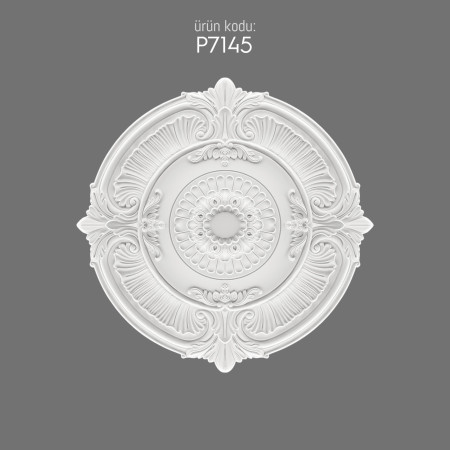
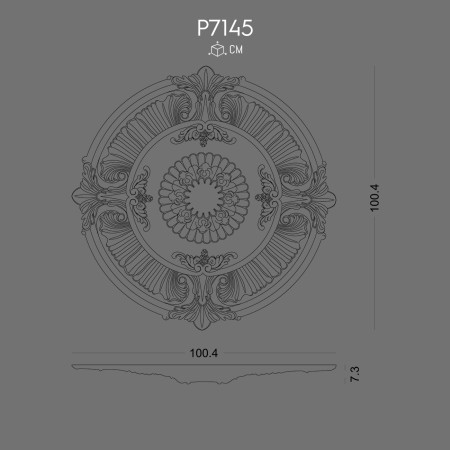


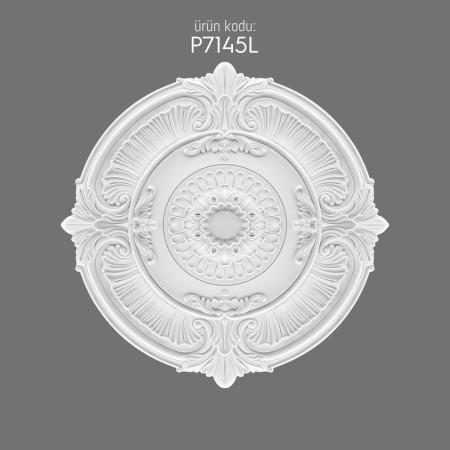
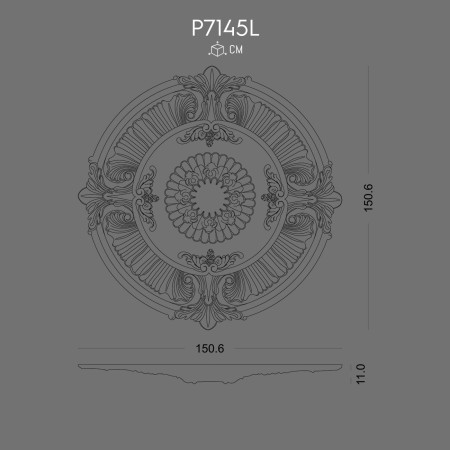
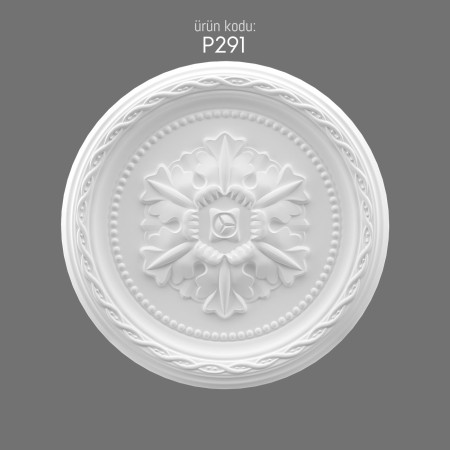
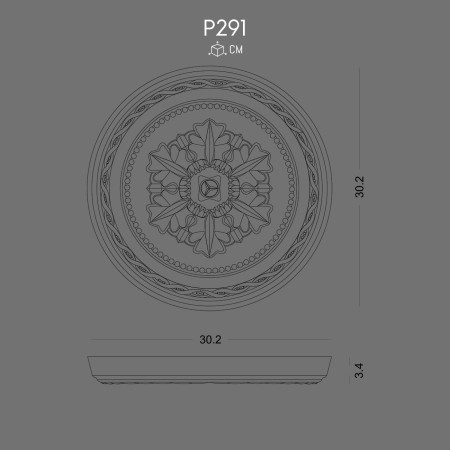




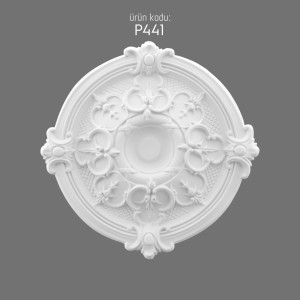
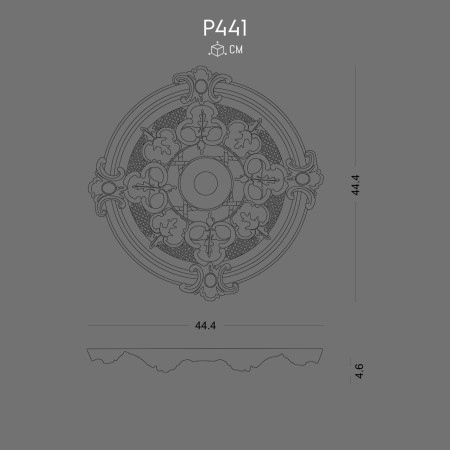
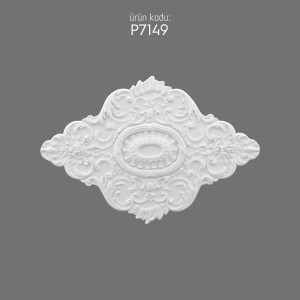
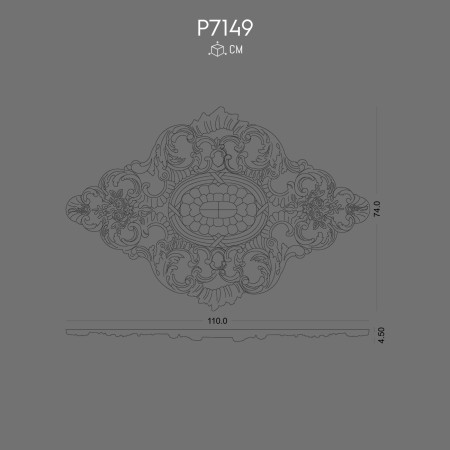



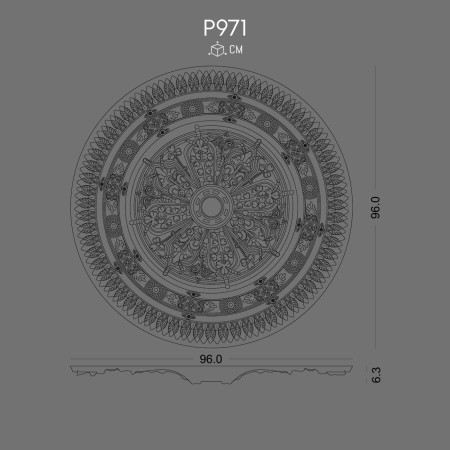
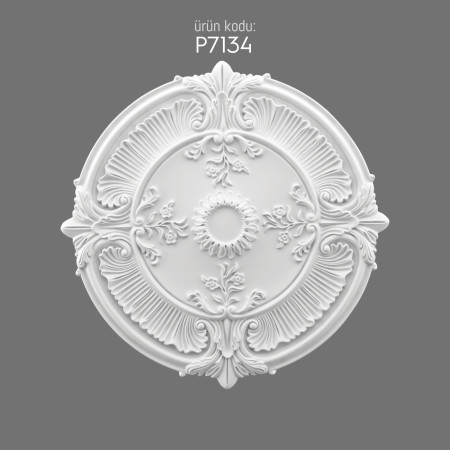
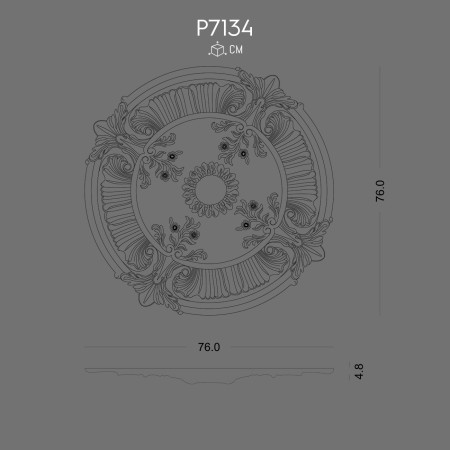







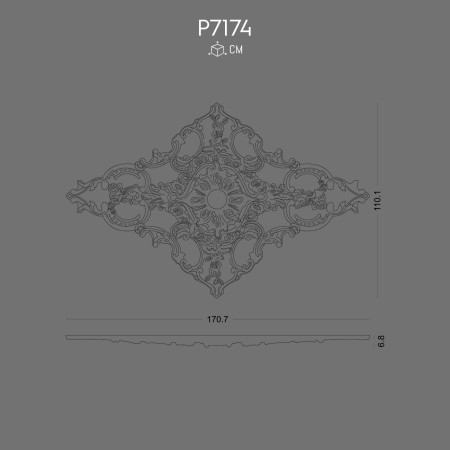





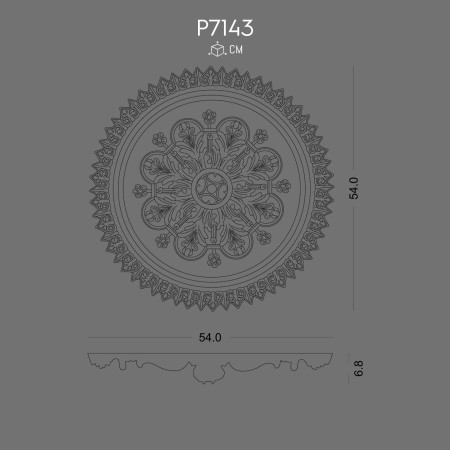


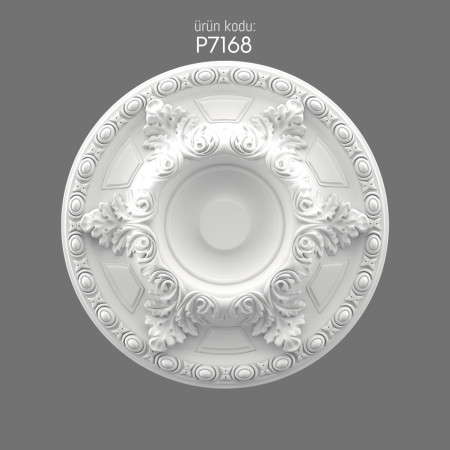
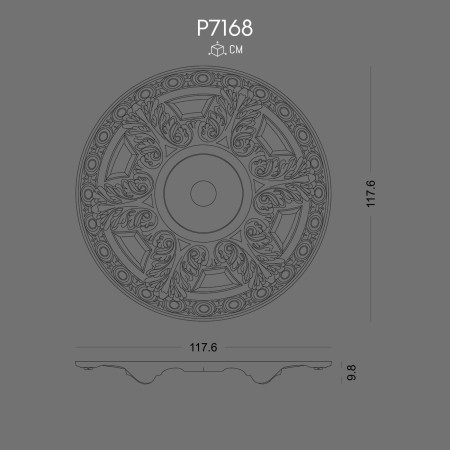











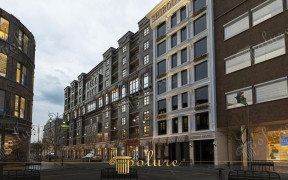


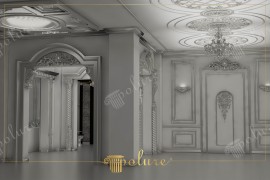

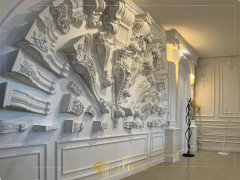

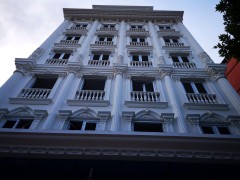



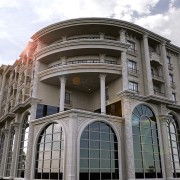












No reviews found for this product. Be the first to comment!